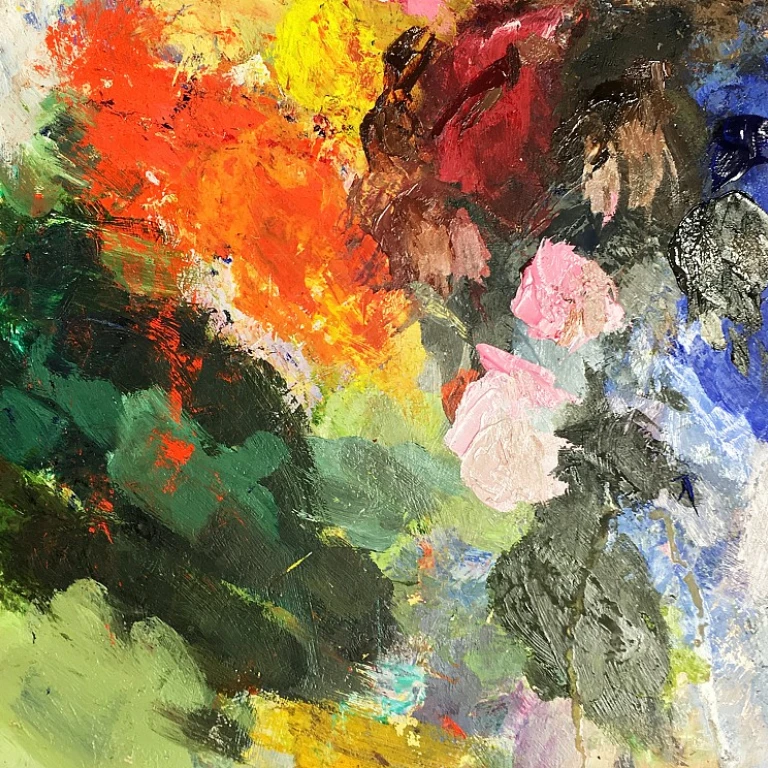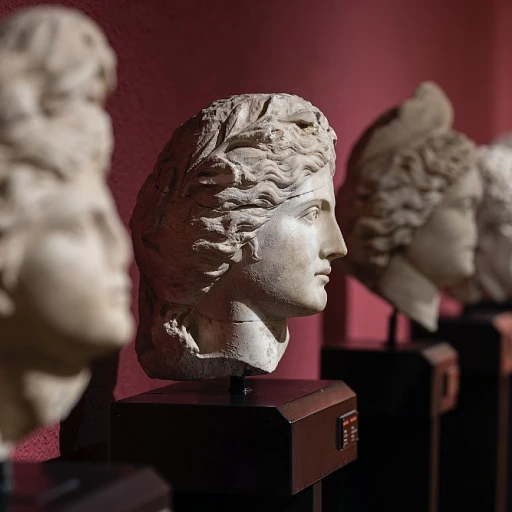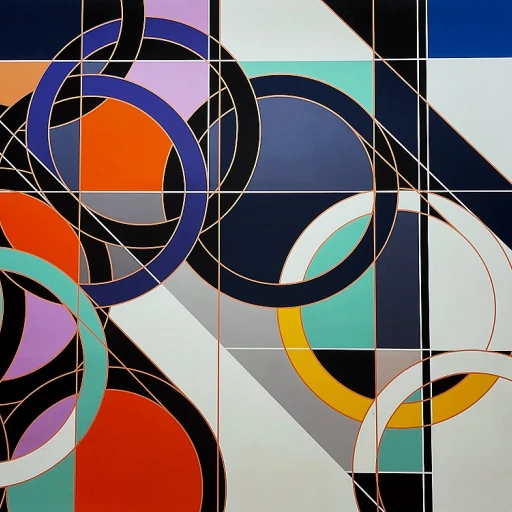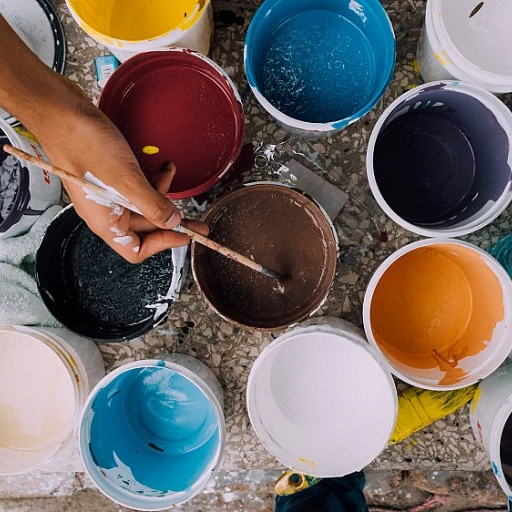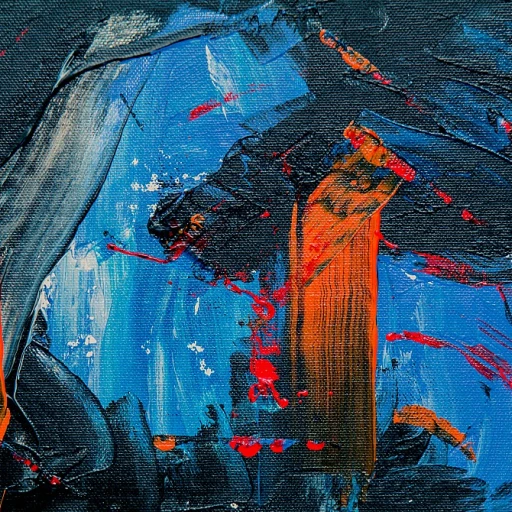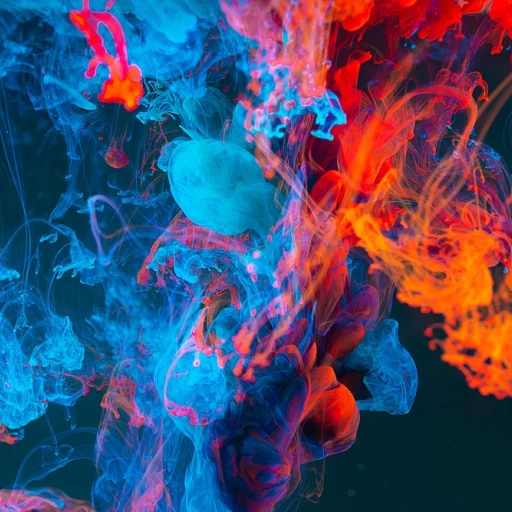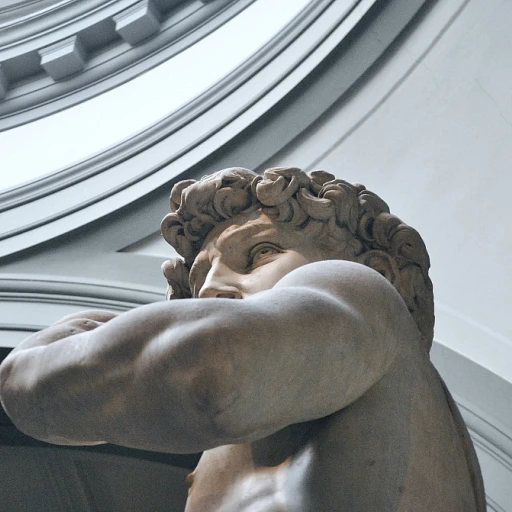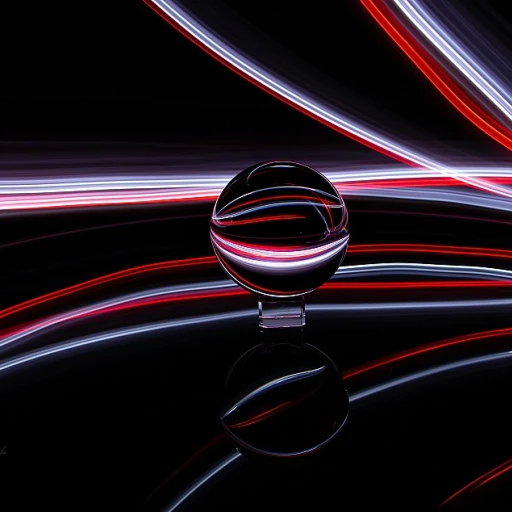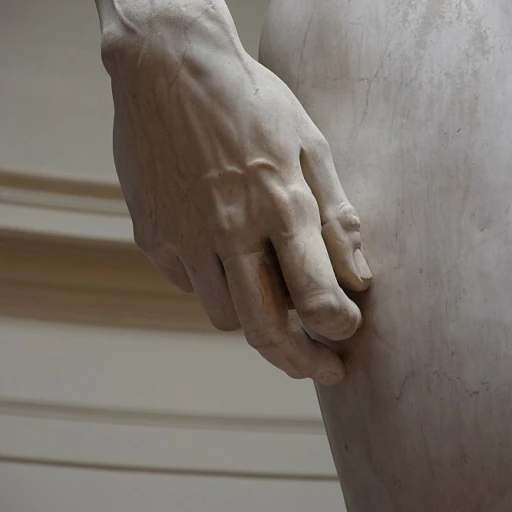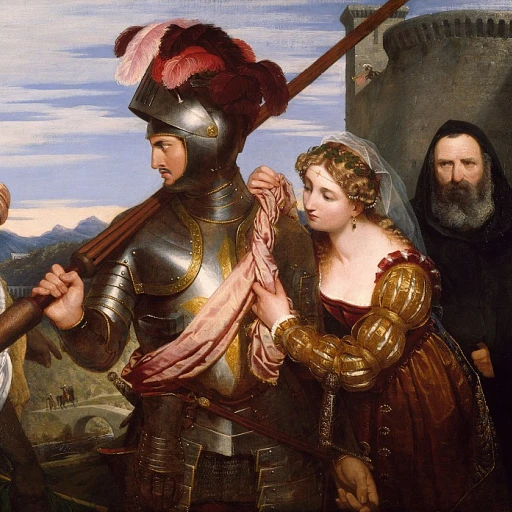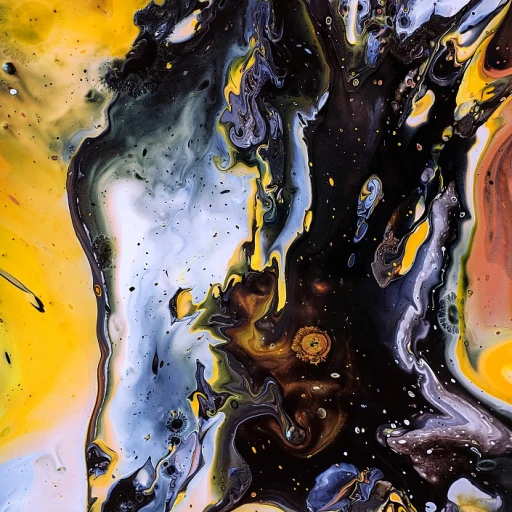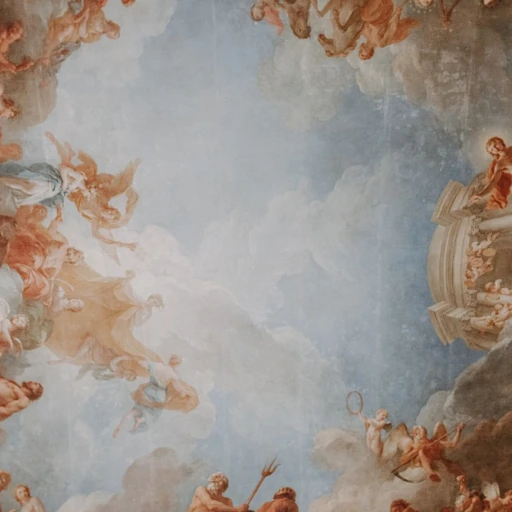-teaser.webp)
The Allure of Abstract Art
The Enigmatic Appeal of Non-figurative Creations
Abstract art, a realm of artistic creation where shapes, colors, and forms break free from the constraints of reality, has long captivated collectors and connoisseurs. Its allure lies in the emotion it evokes, and the endless interpretations it invites. Often described as a dance of wild brushstrokes and vibrant hues, abstract paintings transform canvases into portals of expression and mystery. The works of famous artists like Jackson Pollock, Mark Rothko, and Willem de Kooning serve as quintessential examples of this genre, where individual perspectives breathe life into the works and create a personal connection with the audience.
The realm of abstract art has become synonymous with high value. The market’s focus on these exquisite creations only heightens their desirability, positioning these paintings as not just visual masterpieces but also lucrative investments. Paintings by modern pioneers, such as Gerhard Richter and Barnett Newman, continue to fetch mind-boggling prices at auctions worldwide. While Pollock's and Rothko's works have frequently been recognized as some of the most expensive abstract paintings, the demand for such pieces is unwavering.
At the heart of the abstract art movement is an inherent unpredictability. Unlike realistic artworks that depict recognizable subjects, abstracts require engagement from the observer, who must derive meaning from the artist's chaotic orders. The intrigue lies in their power to push the boundaries of perception, challenging traditional narratives and sparking conversations that transcend ordinary discourse.
In the context of luxury artwork, the appreciation for abstract art has cultivated a robust marketplace where evaluations fluctuate, often driven by intricate dynamics that merit further exploration in the subsequent parts of the article. For collectors, several challenges persist in acquiring these treasures, necessitating the advisory expertise of seasoned art curators and advisors.
The Most Expensive Abstract Painting: A Closer Look
Delving into the World of Top Tier Abstract Masterpieces
The universe of abstract art offers a diverse mix of creativity and innovativeness, yet it has a few crown jewels that stand out for their breathtaking enigmatic allure. One should delve deeper into these iconic works to truly grasp their significance in the modern art world. Among these illustrious masterpieces is a painting that has captured the attention of collectors and art enthusiasts alike by becoming the most expensive abstract painting ever sold. This illustrious status is not only due to its staggering sale price but also because its complex layers of color and form resonate deeply with the viewer. Oil canvases by notable artists have scaled remarkable heights at auctions. The names that frequently come up in discussions of expensive abstract artwork include pioneers of abstract expressionism such as Jackson Pollock and Willem de Kooning. Their works, alongside the ethereal canvases of Mark Rothko and Barnett Newman, have transcended mere pigments on a canvas to become sellable pieces of history. The works of Gerhard Richter and other contemporary artists also vie for this apex status. Notably, records in the art market show sales numbers that are nothing short of staggering, turning abstract artworks into some of the most expensive paintings sold. These pieces are not merely transactions but pivotal moments in art history where creativity and capital intersect. While the staggering prices achieved at auction can inspire awe, they often reflect a confluence of artistry and market dynamics, as well as the artists’ unique roles in the evolution of abstract and modern art. This allure continues to fuel the demand, carving a lucrative niche in the luxury artwork domain.Market Dynamics and Valuation
The Dance of Supply and Demand in the Abstract Art Ecosystem
The abstract art market is a dazzling puzzle dominated by the interplay of prestige, rarity, and the idiosyncratic values of collectors and connoisseurs. The dynamic nature of this segment makes it both exhilarating and unpredictable, capturing the essence of the modern art world with finesse. The canvas of this market landscape is painted by sales records, where names like Jackson Pollock, Willem de Kooning, and Mark Rothko dominate the auction blocks. Their works have not only achieved astounding sale prices but have redefined what it means to possess the "most expensive" abstract paintings. Pollock's intricate splatters and Rothko's enigmatic color fields showcase the allure that commands such impressive valuation. Adding to the intrigue is the nuanced perception of abstract art's value, often shifting between traditional aesthetic judgments and contemporary market trends. When iconic pieces are auctioned, they establish not just new price benchmarks but affirm the authority of artists like Barnett Newman and Gerhard Richter in the "modern art" echelon. Moreover, the online sphere has become an influential arena where collectors explore the characteristics that elevate certain pieces to luxury artifacts. Through verified sales data and meticulously documented transactions, transparency in pricing has improved, although fluctuations remain inevitable. To truly understand this market, professionals must appreciate the subtleties of auction behavior and sales figures. Indeed, the role of advisory entities and curators (as explored further in the article) already signifies the importance of detailed insight in navigating this prestigious marketplace. For more on the valuation and grandeur of abstract masterpieces, see our article on color harmony in abstract art for luxury collectors.Challenges in Collecting Luxury Artwork
Complexities in Acquiring Exceptional Abstract Pieces
The journey of acquiring luxury artwork, particularly in the realm of abstract paintings, is fraught with complexities that both seasoned collectors and newcomers must deftly navigate. When delving into the world of high-priced canvases, such as those by iconic artists like Jackson Pollock and Willem de Kooning, collectors face a myriad of challenges. First, the sheer rarity of top-tier artwork can pose a significant obstacle. Most abstract pieces by renowned artists have already found permanent homes in private collections or are prominently displayed in museums, making their availability for purchase a rare event. Auctions, which are the primary platform for acquiring such masterpieces, often see fierce competition, driving prices to unprecedented heights. Moreover, the authenticity of a painting is of paramount importance. With forgeries and misattributions not uncommon, verifying the provenance of an abstract painting is essential to ensure that the investment is genuine. Art authentications often require the expertise of specialists who can definitively ascertain the origins of a piece, an added step that not only elongates the process but also increases costs. Finally, the inherent subjectivity of modern art adds another layer of complexity. The valuation of abstract paintings often relies on a combination of artistic merit, historical significance, and market trends. This fluctuating market landscape can pose challenges in both underestimating and overestimating a work's true worth, making it crucial for collectors to possess not only a deep appreciation of abstract art but also a keen understanding of its market dynamics. In summary, while the acquisition of an expensive abstract masterpiece can yield immense satisfaction and prestige, it requires strategic planning and a well-informed approach to navigate the multifaceted challenges intrinsic to this segment of luxury artwork.The Role of Art Advisors and Curators
Art Advisors: The Gatekeepers of Luxury Art Collections
In the enthralling realm of luxury abstract art, where expensive paintings such as iconic works by Jackson Pollock, Willem de Kooning, and Mark Rothko command staggering prices, the role of art advisors and curators becomes indispensable. These experts not only guide collectors through the intricate world of modern and abstract art but also help them navigate the complexities of the market dynamics and valuations discussed earlier.
Art advisors possess a deep understanding of what makes an abstract painting truly unique and valuable, from the subtleties of Gerhard Richter’s brushwork to the profound color compositions of Barnett Newman. Their expertise allows collectors to discern the most captivating pieces that align with their personal tastes and investment goals. By keenly observing trends and shifts in the contemporary art market, advisors can predict which paintings might escalate in value, thus maximizing the investment potential of a collection.
Curators, on the other hand, play a crucial role in presenting and maintaining these collections. They curate exhibitions that contextualize the abstract works and highlight their significance within modern art movements. Their selections often include masterpieces that captivate both seasoned collectors and new investors, balancing a collection’s aesthetic appeal with its economic value.
An art advisor or curator’s influence can make a monumental difference, particularly when acquiring pieces that are known to have fetched record prices, like the celebrated abstract canvas by Jackson Pollock. With paintings being sold at record-breaking prices, as seen in the vibrant auction scenes, advisors ensure that each purchase is not only an addition to the wall art collection but also a judicious investment.
For those passionate about luxury artwork, enlisting the guidance of seasoned professionals when acquiring and curating their collections is a choice that pays dividends, both in the aesthetic enjoyment of modern masterpieces and in the economic appreciation over time.
Future Trends in Luxury Abstract Art
Emerging Trends in the Abstract Art Market
The landscape of luxury abstract art is ever-evolving, with new trends shaping the market and influencing the valuation of artworks. As we look to the future, several key trends are emerging that collectors and enthusiasts should be aware of.
Technological Integration in Art
With the rise of digital platforms, technology is playing an increasingly significant role in the art world. Virtual reality and augmented reality are offering new ways to experience abstract paintings, allowing potential buyers to visualize how a piece might look in their own space. This technological integration is not only enhancing the buying experience but also expanding the reach of artists and galleries globally.
Sustainability and Ethical Considerations
As awareness of environmental issues grows, there is a noticeable shift towards sustainable practices in the creation and sale of art. Collectors are becoming more conscious of the materials used in artworks, such as oil canvas, and the ethical implications of their purchases. This trend is influencing both the production and valuation of abstract art, with sustainably created pieces gaining more attention and potentially higher prices at auction.
Increased Interest in Diverse Artists
The art world is witnessing a growing appreciation for diverse voices and perspectives. Artists from underrepresented backgrounds are gaining recognition, and their works are becoming highly sought after. This shift is not only enriching the diversity of abstract art but also impacting market dynamics as collectors seek to include these unique perspectives in their collections.
Investment in Contemporary Art
Contemporary art continues to be a strong investment opportunity, with pieces by modern artists like Gerhard Richter and others consistently achieving high prices at auction. As the market for contemporary abstract paintings grows, so does the interest in works by both established and emerging artists. This trend suggests a robust future for the luxury abstract art market, with continued demand for innovative and thought-provoking pieces.
In conclusion, the future of luxury abstract art is bright, with technological advancements, sustainable practices, and a focus on diversity driving the market forward. Collectors and enthusiasts alike should stay informed about these trends to make savvy investment decisions and appreciate the evolving beauty of abstract art.

